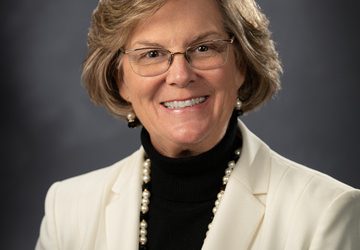By Ryan Quinn
The Charleston Gazette Mail
CHARLESTON, W.Va. — Two former West Virginia journalists who graduated from West Virginia University and Marshall University were among those whose work earned Pulitzer Prizes, journalism’s most prestigious annual awards, for 2016.
Margie Mason, a former Charleston Daily Mail intern and 1997 WVU graduate, was a leading journalist on The Associated Press team whose reporting on slavery in Thailand’s seafood industry and its ties to U.S. dinner tables set 2,000 slaves free and earned the Pulitzer in Public Service. That’s the highest-regarded of the Pulitzers, which were announced Monday in New York.
Huntington native John Hackworth won the Pulitzer in editorial writing for a series of editorials surrounding the lack of punishment for the killers of Matthew Walker, an inmate who was beaten to death by correctional officers at the Charlotte Correctional Institute. According to a Marshall news release, Hackworth, editor of Florida’s Sun newspapers, graduated with a Marshall journalism degree in 1971 and also worked for The Herald-Dispatch, of Huntington.
“Soon, all but two of the original 10 guards involved in the beating were fired or quit,” Sun newspapers Executive Editor Chris Porter wrote about his organization’s work in a Pulitzer nomination letter.
Mason, the AP’s Indonesia bureau chief, is a Monongalia County native who started reporting at The Dominion Post, in Morgantown, and also worked for the AP in Charleston for about year. She’s a graduate of what WVU now calls the Reed College of Media.
Mason met George Esper, a Vietnam War reporter who was the AP’s Saigon bureau chief when it fell to North Vietnamese forces, when he visited the university. She said Esper, who also taught at the university and died in 2012, became her “guiding light,” and in 2000, she traveled with him to Vietnam to cover the 25th anniversary of the fall of Saigon.
After that, “it was very clear that I was going to do anything in my power to get back to Asia to work full time,” said Mason, whose parents still live in Daybrook in Monongalia County.
“Margie is a fantastic journalist who is very proud of her West Virginia roots,” said AP national writer Martha Mendoza, part of the team of four lead reporters, all women, on the fishing slavery series. She said Mason still uses phrases like “doing it up right.”
Mendoza said the series, which the AP started publishing in March 2015, was Mason’s brainchild. Mendoza said previous stories surrounding the issue by Mason and other reporters weren’t having much of an impact, so they decided they needed to find captured slaves.
Mason said to have a bigger impact than previous stories on the “open secret” of the labor abuse, the team set out to “talk to captive slaves, and we wanted to follow their catch.” She said it was important to trace the slave-caught seafood back to specific stores.
“We wanted to name names,” Mason said.
When the team found out about men in cages in a village, “at that point we knew that we had an amazing story and we knew that there was no way people were going to be able to ignore this anymore,” she said.
A March 2015 story stated that seafood tainted by slave labor can enter supply chains of major grocery stores, such as Kroger and Wal-Mart, and the biggest food distributor, Sysco, as well as the supply chains of canned pet food, like Fancy Feast and Iams.
“It can turn up as calamari at fine-dining restaurants, as imitation crab in a California sushi roll or as packages of frozen snapper relabeled with store brands that land on our dinner tables,” the story stated. This fish was gathered by slaves who “said the captains on their fishing boats forced them to drink unclean water and work 20- to 22-hour shifts with no days off. Almost all said they were kicked, whipped with toxic stingray tails or otherwise beaten if they complained or tried to rest.”
“These men were captives of Thailand’s seafood industry, in some cases for decades, risking murder by captains if they failed to obey,” AP Senior Vice President and Executive Editor Kathleen Carroll wrote in a letter explaining the impact of the AP’s reporting. “They were forced to catch or process seafood that then made its way into the supply chains of almost every major American food retailer, and to dinner tables worldwide.
“… Because of the extraordinary efforts of AP reporters Esther Htusan, Margie Mason, Robin McDowell and Martha Mendoza, a dozen people have been jailed. Ships worth millions of dollars have been seized and businesses shut down.”
Carroll wrote that one of the world’s largest companies “cut ties with abusive and unregulated contractors and hired 1,200 people in-house instead.”
Mason and McDowell worked for months before they learned about the remote Indonesian island village of Benjina, where slaves were brought through Thailand. The reporters wrote that Benjina “is impossible to reach by boat for several months of the year” and, “in the deeply forested island interiors, new runaways forage for food and collect rainwater, living in constant fear of being found by hired slave catchers.”
“They discovered hundreds of Burmese slaves,” Carroll wrote. “Some of them caged, others buried in a company cemetery, their graves marked with fake Thai names.”
“Reporters logged the names of ships loaded with slave-caught seafood, then used satellite data to track them,” she wrote. “One ship went to a Thai seaport, and so did our reporters. For four days, they hid in the back of a small truck, scrunched down behind tinted windows because the area was patrolled by gunmen for the fish mafia.”
Indonesian authorities ended up evacuating hundreds of slaves from Benjina. Carroll wrote that reporters used satellite images to find boats of captains who had fled Benjina with slaves.
“The United Nations is now investigating labor abuses in supply chains, as are local district attorneys and federal law enforcement agencies,” Carroll wrote. “The European Union warned Thailand that it risked an EU seafood import ban if it failed to deal promptly with slavery in the industry.”
Mason said that for all of the attention, her team only followed “one thread of this,” and the problem continues.
For one story she wrote alone, Mason followed home a man who’d been a slave for 22 years. She said seeing him reunite with his mother was “an incredible moment as a journalist and just as a human being.”
His nights had been filled with dreams of his mother, but just after they joyously reunited, the 60-year-old woman grabbed at her heart and began to gasp for air. Her son blew into her mouth and screamed for her to open her eyes.
“She slowly revived, and Myint took a long look into her eyes,” Mason wrote in her story. “He was finally free to see the face from his dreams. He would never forget it again.”
Reach Ryan Quinn at [email protected], facebook.com/ryanedwinquinn, 304-348-1254 or follow @RyanEQuinn on Twitter.





